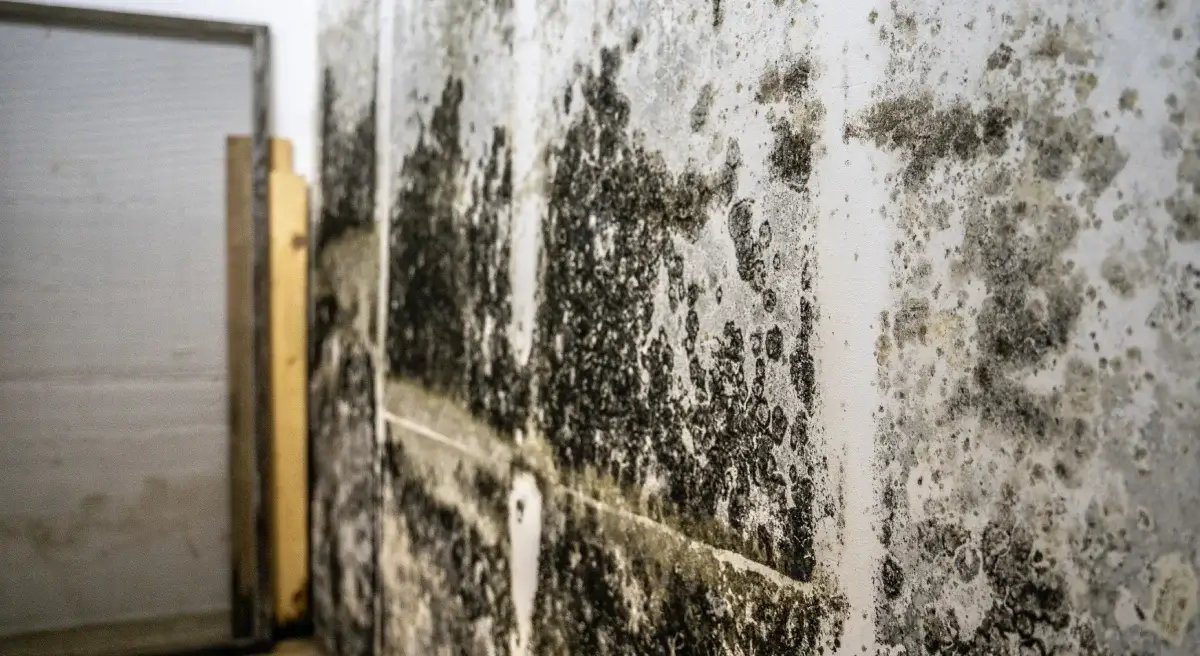Mold Remediation Services
The presence of mold in your Florida home is not something to be taken lightly. Mold is a microorganism that can impact the health of your household. When you’re faced with mold growth throughout your home, what do you do? Turn to the experts at Dreyer’s DKI. Our mold removal and remediation services are designed to effectively eliminate mold growth within your home, preventing further growth and spread. At Dreyer’s DKI, we’re committed to putting your needs first with our damage restoration services like mold remediation in Gainesville & Alachua. Need Emergency Mold Removal Services?What Causes Mold
The growth of mold is caused by the presence of excess moisture. Mold can grow on a multitude of surfaces within a home ranging from drywall to cardboard. Areas with large amounts of moisture like bathrooms, attics, and near pipes and windows are particularly prone to mold. The larger the amount of moisture, the higher the probability mold has to thrive.How Long Does It Take For Mold To Grow
Generally, mold growth can start within a 24-48 hour time frame once humidity is present in the air. Growth can even start immediately and under the right conditions, can be observed as it spreads. Mold spores spread fast and are exceptionally resilient when it comes to where they can survive. Much like many aspects of water damage restoration, mold needs to be dealt with immediately to avoid health and structural complications.Signs of Mold in the House
There are a variety of signs that indicate mold growth. Some are easier to spot than others. You might even smell the musty odor or even see mold growth. Possibly both. Visually, mold is characterized by its fuzzy or stained appearance and can come in colors such as black, brown, white, green, and orange. What may start as specks can grow into much larger spots. Your home may also have mold if you notice these signs:- Water stains.
- Warped walls or floors.
- A recently flooded basement.
- Roof or plumbing leaks.
- Allergy symptoms in a damp room.
What is the Difference Between Mold and Mildew
While a type of mold, mildew is commonly referred to by homeowners as mold that’s easily removable. Mildew is typically flat and grows on surfaces like shower walls and window sills. Even though mildew isn’t as serious as other types of mold, it can still cause health complications.Symptoms of Mold Sickness
The development of mold sickness depends on factors such as the type of mold, length of exposure, how much mold, and your body’s sensitivity. Those particularly at risk are infants and children, older adults, those with weakened immune systems, and people with chronic lung disease. Mold typically grows out of sight—so how do you know if your health issues are related? The common symptoms of mold sickness individuals may experience include:- Allergies
- Eye Infections
- Asthma
- Irritation
- Lung Infections
Types of Mold
Mold types are broken down into three categories:- Allergenic - Causes an allergic reaction.
- Pathogenic - Can cause disease.
- Toxigenic - Can lead to dangerous health conditions.
How to Prevent Mold
As a homeowner, what can you do to prevent mold growth? Here are some tips to better prevent mold growth in your Florida home:- Fix leaks
- Clean up after flooding
- Control humidity levels
- Make sure water-prone areas are properly ventilated
Mold Testing
Mold testing is a task worth considering if you believe there’s still mold in your home after cleanup or if you suspect hidden mold. At-home tests bought online or in-store aren’t the best route to take, so it’s better to rely on hiring a qualified professional with the necessary certifications.Emergency Mold Removal in Alachua and Gainesville, FL
Do you have or suspect mold growth in your Florida home? Our team can start with a thorough mold inspection to identify the types of mold present in your home. Afterward, our removal and remediation services are there to eradicate the current presence of mold and prevent further spread. Call Us Now For 24/7 Mold RemovalMold Damage FAQs
What are the signs of mold in a home or building?
Common signs of mold include a musty odor, visible discolored spots on walls or ceilings, increased allergy symptoms, and recent water damage.
Is mold dangerous?
Some types of mold can cause health issues, particularly for people with respiratory conditions, allergies, or weakened immune systems.
How long does mold remediation take?
Most mold remediation jobs can be completed within 1-5 days, depending on the size of the affected area and the extent of the contamination.
Can I clean mold myself?
Small areas of surface mold may be cleaned with household products, but extensive mold spots should be addressed by certified professionals to avoid spreading spores or incomplete removal.
Will mold come back after remediation?
Mold will not come back if the moisture source is properly addressed. Preventing future water issues is key to keeping mold from returning.
Have more questions about possible mold damage? Visit our mold removal FAQ page for more information.
Our Certifications
IICRC Certified (Institute of Inspection, Cleaning and Restoration Certification)- As an IICRC-certified company, we follow industry-recognized standards for damage restoration and cleaning to deliver safe, effective, and reliable results. RIA (Restoration Industry Association) - Our RIA membership reflects our commitment to ethical practices, advanced training, and staying at the forefront of restoration industry best practices. EPA Lead-Safe Certified- Our EPA Lead-Safe certification shows we’re trained to safely handle and remove lead-based materials, protecting everyone in your home or business.Types of Mold Damage
Discouraging further mold growth by eliminating moisture is the most important factor in getting rid of mold. Mold cannot survive without moisture. As long as your home is clean, dry, waterproofed, and airtight, mold will no longer be a problem.
Learn MoreBlack mold is extremely toxic. When this microorganism releases its spores, it also spreads mycotoxins in the air. Mycotoxins can cause serious breathing difficulties, including bleeding in the lungs. Staying in a room that is heavy with black mold can affect both your physical and mental health.
Learn More







